Did you know that roasted vegetables are not only delicious but also incredibly versatile? In fact, according to a recent survey, over 70% of people who try roasted vegetables end up incorporating them into their regular meal rotation. The crispy exterior and caramelized flavors make these veggies a favorite for even the pickiest eaters.
Roasting vegetables on a sheet pan is a foolproof method that requires minimal effort with maximum taste. Whether you’re a seasoned cook or a beginner in the kitchen, mastering the art of roasting veggies is a game-changer in the world of easy and nutritious meals.
Key Takeaways:
- Roasted vegetables are incredibly popular, with over 70% of people including them in their regular meals.
- Roasting vegetables on a sheet pan is an easy and efficient way to enjoy delicious and nutritious meals.
- With the right techniques and seasoning, you can transform simple vegetables into flavorful and versatile dishes.
- Roasted vegetables are a great option for those who may not typically enjoy raw or boiled vegetables.
- Stay tuned to discover cutting techniques, time-saving tips, seasoning suggestions, and a collection of mouthwatering roasted vegetable recipes.
Cutting Vegetables for Roasting
When it comes to roasting vegetables on a sheet pan, the key to success lies in proper preparation. Cutting the vegetables into uniform sizes ensures even cooking and a consistent texture throughout. Here are some tips to help you master the art of cutting vegetables for roasting:
- Root Vegetables: Beets, sweet potatoes, and potatoes should be cut into smaller pieces to ensure they cook through. Aim for approximately 1/2-inch to 1-inch cubes.
- Long Root Vegetables: Carrots and parsnips can be halved lengthwise and then sliced into half-moon shapes.
- Cruciferous Vegetables: Brussels sprouts, cauliflower, and broccoli should be halved or cut into small rectangular pieces. This allows for better caramelization and a tender texture.
- Soft Vegetables: Green beans and asparagus can be left as is since they cook quickly and maintain their texture.
- Bell Peppers: Remove the core and seeds, then cut them into pieces. You can choose to slice them into strips or dice them into smaller chunks.
- Onions: Slice onions into wedges to retain their shape and prevent them from becoming too soft.
- Cherry Tomatoes: These can be left whole for roasting. They add a burst of flavor and color to your dish.
By cutting your vegetables appropriately, they will all finish cooking at the same time and have a uniform texture. This ensures a delightful eating experience and enhances the visual appeal of your roasted vegetables. Experiment with different vegetable combinations and cutting techniques to discover your favorite roasting style.
For a visual representation of the cutting techniques for roasting vegetables, refer to the table below:
| Vegetable | Cutting Technique |
|---|---|
| Root Vegetables (beets, sweet potatoes, potatoes) | 1/2-inch to 1-inch cubes |
| Long Root Vegetables (carrots, parsnips) | Halved lengthwise, then sliced into half-moon shapes |
| Cruciferous Vegetables (Brussels sprouts, cauliflower, broccoli) | Halved or cut into small rectangular pieces |
| Soft Vegetables (green beans, asparagus) | Leave as is |
| Bell Peppers | Remove core and seeds, then slice into strips or dice into chunks |
| Onions | Slice into wedges |
| Cherry Tomatoes | Leave whole |
Now that you have mastered the art of cutting vegetables for roasting, you can move on to other aspects of creating delicious roasted vegetable dishes. In the next section, we will explore time-saving tips to help you make the most of your roasting experience.
Time-Saving Tips for Roasted Vegetables
When it comes to cooking a quick and easy sheet pan dinner, time-saving tips are invaluable. Here are some tricks that will help you save precious time while still enjoying delicious roasted vegetables.
- Purchase Pre-Chopped Vegetables: If you’re in a hurry, consider buying pre-chopped vegetables from the grocery store. This eliminates the time-consuming task of cutting and preparing the vegetables and allows you to focus solely on the roasting process. Just make sure to choose fresh, high-quality pre-chopped veggies to ensure the best flavor.
- Don’t Peel Certain Vegetables: Peeling vegetables like potatoes, eggplants, and carrots can be time-consuming. However, if you properly wash these vegetables, you can skip the peeling process altogether. Not only will this save you time, but it’s also a great way to retain the nutrients found in the skin.
- Prep and Store in Advance: Another time-saving tip is to chop your vegetables in advance and store them in the refrigerator. This way, you can easily grab a handful of pre-cut veggies whenever you’re ready to roast them. It’s a great approach for meal prepping or when you have a busy week ahead.
- Choose a High Roasting Temperature: To speed up the cooking process, preheat your oven to a high temperature, around 400 degrees Fahrenheit. The higher temperature creates a nice caramelization on the outside of the vegetables, giving them a crispy texture while reducing the overall cooking time.
- Spread Vegetables in a Single Layer: When placing the vegetables on the sheet pan, make sure they are spread out in a single layer. This allows the hot air to circulate evenly, ensuring that each vegetable cooks at the same rate. Avoid overcrowding the pan, as this can lead to uneven cooking and steaming rather than roasting.
- Use Enough Olive Oil: Coat your vegetables with enough olive oil to prevent them from sticking to the pan and to enhance their flavor. The oil also helps create a nice crispy texture. Just be careful not to overdo it, as too much oil can make the vegetables greasy.
Incorporating these time-saving tips into your roasted vegetable cooking routine will make your sheet pan dinners even more efficient without sacrificing flavor or nutritional value.
| Time-Saving Tip | Benefits |
|---|---|
| Purchase Pre-Chopped Vegetables | Saves time on preparation |
| Don’t Peel Certain Vegetables | Reduces time and retains nutrients |
| Prep and Store in Advance | Convenient for meal prep and busy schedules |
| Choose a High Roasting Temperature | Speeds up the cooking process |
| Spread Vegetables in a Single Layer | Ensures even cooking |
| Use Enough Olive Oil | Enhances flavor and texture |
Seasoning Suggestions for Roasted Vegetables
Seasoning is the secret to transforming bland roasted vegetables into a burst of delicious flavors. With a wide array of seasoning options, you can customize your roasted veggies to suit your taste preferences. Here are some popular seasoning choices to elevate the flavor of your roasted vegetables:
- Spicy seasonings: Add a kick to your veggies with chipotle chile powder or regular chili powder with cayenne.
- Cheesy seasonings: Sprinkle grated cheddar or Parmesan cheese over your roasted vegetables for a satisfying cheesy taste.
- Garlic seasonings: Elevate the flavor with garlic powder or thinly sliced garlic, creating a savory and aromatic profile.
- Citrus seasonings: Brighten up your veggies with the zesty flavors of lemon or orange slices.
- Herb seasonings: Infuse your vegetables with dried rosemary or oregano for a delightful herbal aroma.
- Condiment seasonings: Drizzle pesto or balsamic vinegar over your roasted vegetables for a tangy and flavorful twist.
These seasonings can be added before or during the roasting process to ensure the flavors meld with the vegetables. Feel free to experiment and combine different seasonings to create unique and tantalizing combinations. Let your taste buds guide you as you discover your favorite seasoning pairings.
For a visual reference, check out the image below showcasing a variety of roasted vegetables:
The Ultimate Collection of Roasted Vegetable Recipes
The possibilities for roasted vegetable recipes are endless. From simple side dishes to more elevated options, there is a recipe for every occasion. Some popular roasted vegetable recipes include roasted bell peppers, zucchini, sweet potatoes, red onions, broccoli, and more. The seasoning combinations can be customized to suit your taste preferences. Whether you’re looking for a quick and easy weeknight dinner or a festive dish for a special occasion, there is a roasted vegetable recipe out there for you.
Roasted Bell Peppers and Zucchini
Ingredients:
- 2 red bell peppers
- 2 yellow bell peppers
- 2 zucchini
- 2 tablespoons olive oil
- 1 teaspoon garlic powder
- 1 teaspoon dried basil
- Salt and pepper to taste
Instructions:
- Preheat the oven to 425°F (220°C) and line a sheet pan with parchment paper.
- Slice the bell peppers and zucchini into strips.
- In a bowl, toss the sliced vegetables with olive oil, garlic powder, dried basil, salt, and pepper.
- Spread the seasoned vegetables evenly on the prepared sheet pan.
- Roast in the preheated oven for 20-25 minutes, or until the vegetables are tender and slightly caramelized.
- Remove from the oven and serve as a side dish or use in other recipes.
Roasted Sweet Potatoes and Red Onions
Ingredients:
- 2 sweet potatoes
- 1 red onion
- 2 tablespoons olive oil
- 1 teaspoon smoked paprika
- 1 teaspoon dried thyme
- Salt and pepper to taste
Instructions:
- Preheat the oven to 425°F (220°C) and line a sheet pan with parchment paper.
- Peel and dice the sweet potatoes into bite-sized cubes.
- Slice the red onion into wedges.
- In a bowl, toss the sweet potatoes and red onions with olive oil, smoked paprika, dried thyme, salt, and pepper.
- Spread the seasoned vegetables evenly on the prepared sheet pan.
- Roast in the preheated oven for 25-30 minutes, or until the sweet potatoes are tender and golden brown.
- Remove from the oven and serve as a side dish or incorporate them into your favorite recipes.
Roasted Broccoli with Garlic and Parmesan
Ingredients:
- 1 head of broccoli
- 2 tablespoons olive oil
- 2 cloves garlic, minced
- 2 tablespoons grated Parmesan cheese
- Salt and pepper to taste
Instructions:
- Preheat the oven to 425°F (220°C) and line a sheet pan with parchment paper.
- Trim the broccoli florets from the head and cut them into bite-sized pieces.
- In a bowl, toss the broccoli florets with olive oil, minced garlic, salt, and pepper.
- Spread the seasoned broccoli evenly on the prepared sheet pan.
- Roast in the preheated oven for 15-20 minutes, or until the broccoli is tender and slightly charred.
- Remove from the oven, sprinkle with grated Parmesan cheese, and serve as a flavorful side dish.
My Go-To Roasted Vegetable Recipe
When it comes to roasting vegetables, my go-to recipe is a simple blend of Italian-seasoned veggies that can be enjoyed year-round. This flavorful combination includes bell peppers, zucchini, sweet potatoes, red onions, and broccoli. The result is a delicious medley of colors, flavors, and textures that will delight your taste buds.
To bring out the best in these vegetables, I use a combination of ingredients that perfectly complement the Italian flavors. Here’s what you’ll need:
- 1 red bell pepper, sliced
- 1 yellow bell pepper, sliced
- 1 zucchini, sliced
- 1 sweet potato, peeled and cubed
- 1 red onion, sliced
- 1 cup broccoli florets
- 2 tablespoons olive oil
- 1 tablespoon Dijon mustard
- 1 tablespoon Italian seasoning
- 1/2 teaspoon salt
- 1/4 teaspoon black pepper
- 1/4 cup grated Parmesan cheese
Start by preheating your oven to 400 degrees F (200 degrees C). Then, in a large bowl, combine the olive oil, Dijon mustard, Italian seasoning, salt, pepper, and Parmesan cheese. Toss in the sliced bell peppers, zucchini, sweet potatoes, red onions, and broccoli, making sure they are evenly coated with the seasoning mixture.
Spread the seasoned vegetables in a single layer on a sheet pan, ensuring they have enough space to roast evenly. Place the sheet pan in the preheated oven and roast for 25 to 35 minutes, tossing and rotating the vegetables halfway through cooking. Keep an eye on them to avoid overcooking or burning.
Once the vegetables are tender and slightly caramelized, remove them from the oven and let them cool for a few minutes before serving. The combination of flavors from the Italian seasoning, Dijon mustard, and Parmesan cheese creates a mouthwatering dish that can be enjoyed on its own or used as a versatile base for various recipes.
Whether you’re looking for a healthy side dish, a colorful addition to a salad or grain bowl, or a flavorful filling for wraps and sandwiches, these Italian-seasoned roasted vegetables are sure to impress. They are packed with nutrients, bursting with flavor, and incredibly versatile.
So why not give my go-to recipe for Italian-seasoned roasted vegetables a try? It’s a simple and delicious way to elevate your weekday meals and add a touch of Mediterranean flair to your plate.
Best Ways to Use Roasted Vegetables
In addition to serving roasted vegetables as a side dish, there are many creative ways to incorporate them into other meals. Here are some of my favorite ideas for incorporating roasted veggies into your meals:
- Add them to pasta dishes: Roasted vegetables can bring a delicious depth of flavor to your favorite pasta dishes. Whether tossed with a creamy Alfredo sauce or a tangy tomato sauce, the roasted veggies will add a satisfying bite.
- Top your pizzas with roasted vegetables: Instead of traditional pizza toppings, try adding roasted veggies to your homemade or store-bought pizza. The combination of the crispy crust, melty cheese, and flavorful roasted veggies will take your pizza game to the next level.
- Upgrade your grilled cheese sandwiches: Take your grilled cheese sandwiches to new heights by adding a layer of roasted vegetables. The creamy cheese, crispy bread, and flavorful veggies create the ultimate comfort food.
- Toss them in salads: Roasted vegetables can add a hearty and satisfying element to any salad. Combine them with fresh greens, your favorite dressing, and some crunchy toppings for a nutritious and delicious meal.
- Stir-fries with a twist: Give your stir-fries a burst of flavor by incorporating roasted veggies. Their caramelized sweetness will complement the savory stir-fry sauce and tender meat or tofu.
- Breakfast delights: Start your day off right by adding roasted vegetables to your morning omelettes or scrambled eggs. The earthy flavors of the veggies will bring a delicious twist to your usual breakfast routine.
Quote: “Roasted vegetables bring a delicious depth of flavor to dishes, whether it’s a pasta, pizza, or even a breakfast omelette.” – [Your Name]
Roasted vegetables can also be stored in the refrigerator for up to 5 days, making them a convenient addition to your meal prep routine. Simply reheat them when needed for a quick and nutritious meal. If you have leftovers or want to stock up on roasted veggies, they can be frozen for up to 3 months. While they may be slightly less crisp after thawing, they will still retain their delicious flavors.
Roasted Vegetables Pairing Guide
Below is a table showcasing some popular roasted vegetables and their perfect pairings:
| Roasted Vegetables | Perfect Pairings |
|---|---|
| Bell Peppers | Grilled chicken or steak |
| Zucchini | Pasta dishes |
| Sweet Potatoes | Burgers or sandwiches |
| Red Onions | Grain bowls or salads |
| Broccoli | Asian stir-fries |
Get creative and experiment with different combinations to find your favorite ways to use roasted vegetables. Their versatility and delicious flavors make them a fantastic addition to any meal.
Tips for Storing and Reheating Roasted Vegetables
After enjoying a delicious batch of roasted vegetables, you may find yourself with leftovers. To ensure that your roasted vegetables stay fresh and flavorful, here are some helpful tips for storing and reheating them.
Storing Roasted Vegetables
To store leftover roasted vegetables, simply place them in an airtight storage container. This will help maintain their freshness and prevent them from drying out. It’s important to refrigerate the roasted vegetables promptly to keep them safe to eat. Refrigerated leftovers can usually be enjoyed within 5 days.
Reheating Roasted Vegetables
When it comes to reheating roasted vegetables, you have a couple of options. One method is to warm them in the oven at 350 degrees F. This allows the vegetables to regain their crispiness and enhances their flavors. Spread the roasted vegetables in a single layer on a baking sheet, and bake for about 10 minutes or until heated through.
If you’re short on time, you can also use the microwave to reheat your roasted vegetables. Place them in a microwave-safe dish and cover loosely. Heat in short intervals, stirring in between, until the desired temperature is reached.
Keep in mind that when reheating from frozen, roasted vegetables may be slightly less crisp compared to their freshly roasted counterparts. However, they will still retain their delicious flavors.
Pro Tip: To avoid overcooking, remove the roasted vegetables from the oven or microwave just as they reach the desired temperature. This will help maintain their texture and prevent them from becoming mushy.
Alt Tag: A person storing roasted vegetables in an airtight container.
What to Serve with Roasted Vegetables
Roasted vegetables can be paired with a variety of dishes to create a complete and satisfying meal. Their natural flavors and textures complement a wide range of ingredients, making them a versatile addition to any menu. Whether you’re looking for a light and refreshing option or a hearty and comforting meal, there is a dish that pairs well with roasted vegetables.
1. Serve alongside grilled meats or fish
Roasted vegetables make a great side dish for grilled meats or fish. The smoky flavors from the grill complement the caramelized sweetness of the roasted veggies. Pair them with a juicy steak, succulent grilled chicken, or flaky grilled salmon for a delicious and balanced meal.
2. Add to salads or grain bowls
Roasted vegetables can add a boost of flavor and texture to salads or grain bowls. Toss them with fresh greens, quinoa, or brown rice for a nutritious and filling meal. The combination of crispy roasted vegetables, leafy greens, and grains creates a satisfying and wholesome dish.
3. Use as a filling for sandwiches or wraps
Elevate your sandwiches or wraps by adding roasted vegetables as a filling. Their rich flavors and tender texture provide a delicious contrast to bread or tortillas. Pair them with your favorite proteins, such as grilled chicken or sliced turkey, and add a spread of your choice for a tasty and satisfying meal.
4. Incorporate into pasta dishes
Roasted vegetables can add depth and complexity to pasta dishes. Simply toss them with cooked pasta, a drizzle of olive oil, and your favorite sauce, whether it’s creamy Alfredo, tangy marinara, or pesto. Top your pasta with roasted veggies for added flavor and nutrition.
5. Create a vegetable medley
Combine different roasted vegetables to create a colorful and flavorful vegetable medley. Mix and match your favorite veggies, such as bell peppers, zucchini, carrots, and onions, for a visually appealing and tasty side dish. The combination of various textures and flavors will delight your taste buds.
6. Make roasted vegetable tacos
Turn your roasted vegetables into a delicious and healthy taco filling. Warm up tortillas, fill them with roasted veggies, and top with your favorite taco toppings like salsa, guacamole, or sour cream. The combination of flavors and textures will create a mouthwatering taco experience.
7. Pair with a grain or protein
Roasted vegetables can be enjoyed as a standalone dish by pairing them with a grain or protein. Serve a generous portion of roasted veggies alongside quinoa, rice, or a protein of your choice, such as grilled tofu or seared tempeh. This combination provides a well-rounded and nutritious meal.
With the wide range of possibilities, serving options for roasted vegetables are virtually endless. Get creative and experiment with different pairings to discover your favorite flavor combinations that will elevate your roasted veggie experience.
| Dish | Description |
|---|---|
| Grilled Meat or Fish | Pair roasted vegetables with grilled meats or fish for a delicious and balanced meal. |
| Salads or Grain Bowls | Add roasted vegetables to salads or grain bowls for extra flavor and texture. |
| Sandwiches or Wraps | Use roasted vegetables as a filling for sandwiches or wraps for a tasty and satisfying meal. |
| Pasta Dishes | Toss roasted vegetables with pasta and sauce for a flavorful pasta dish. |
| Vegetable Medley | Combine different roasted vegetables for a colorful and flavorful side dish. |
| Roasted Vegetable Tacos | Turn roasted vegetables into a delicious and healthy taco filling. |
| Pair with a Grain or Protein | Enjoy roasted vegetables with a grain or protein for a well-rounded meal. |
Conclusion
Roasting vegetables in the oven is a simple and delicious way to enjoy a variety of veggies. By following the tips and suggestions in this article, you can create perfectly roasted vegetables every time. Cutting vegetables into similar sizes ensures even cooking, while time-saving tips such as using pre-chopped veggies and high heat help make the process quicker. Seasoning suggestions like spicy chile powder or cheesy Parmesan cheese add incredible flavor to your roasted veggies.
Roasted vegetables are incredibly versatile and can be used in a variety of dishes, from salads to pasta to sandwiches. They can elevate any meal and are perfect for any occasion. With proper storage and reheating techniques, you can enjoy leftover roasted veggies for days to come.
Whether you’re a seasoned chef or a beginner in the kitchen, roasting vegetables is a great option for adding more nutritious and delicious food to your diet. So grab your favorite sheet pan, gather a colorful assortment of vegetables, and let the roasting begin! Your taste buds will thank you.

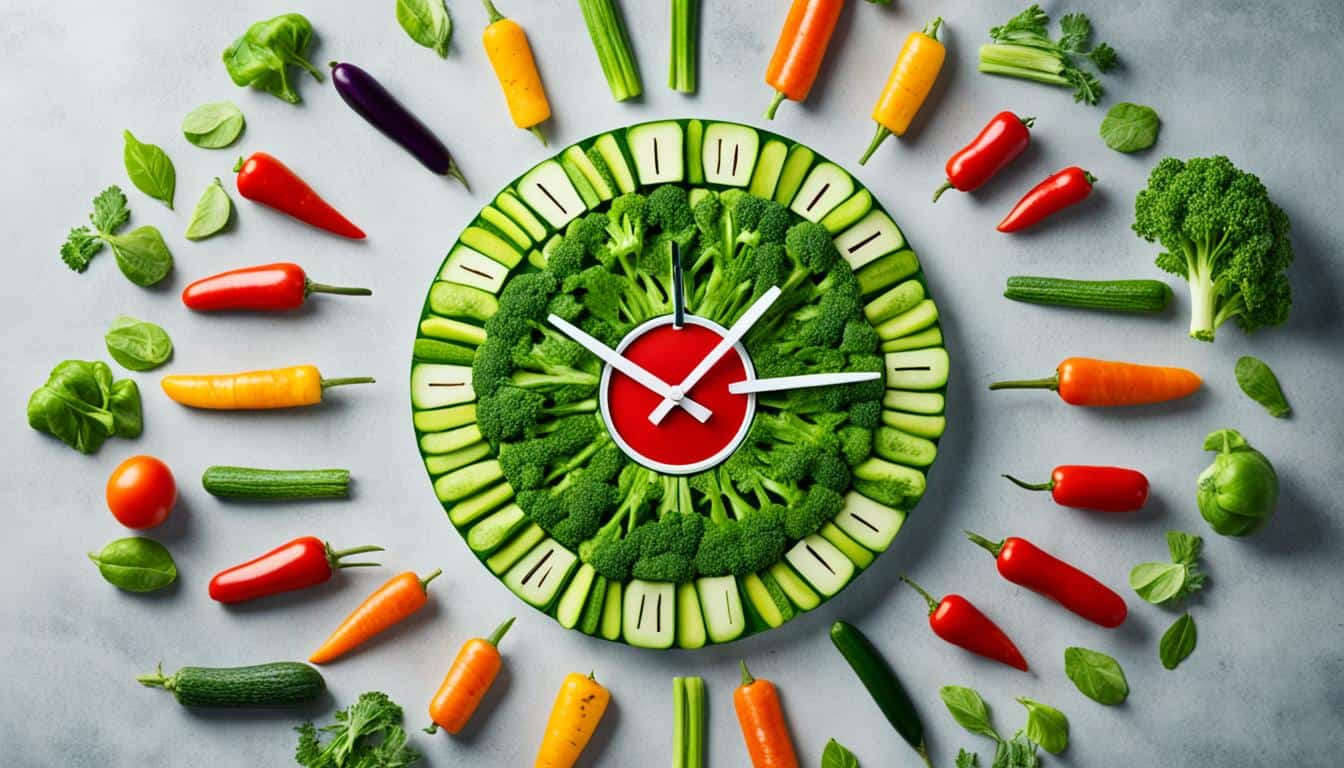
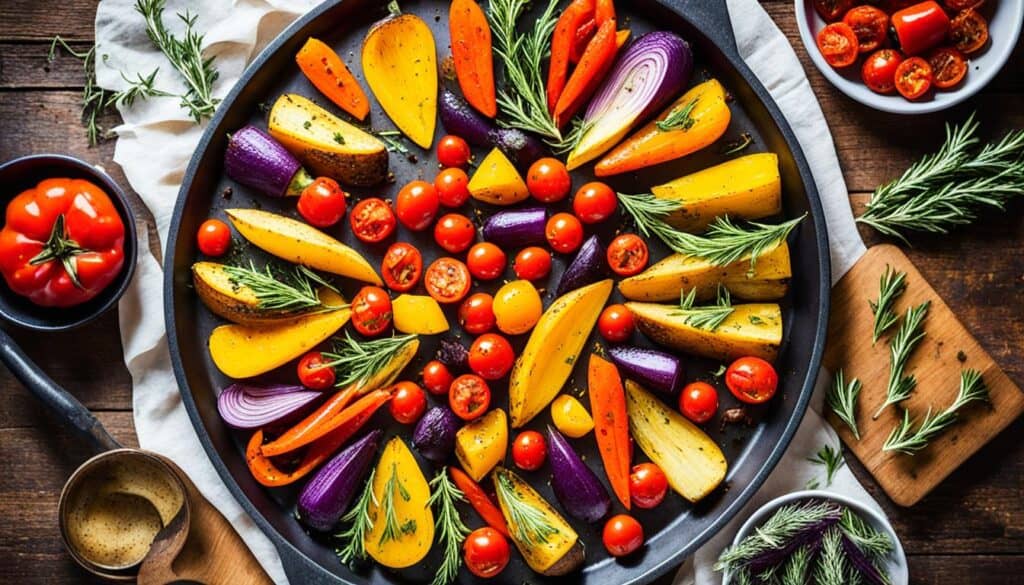
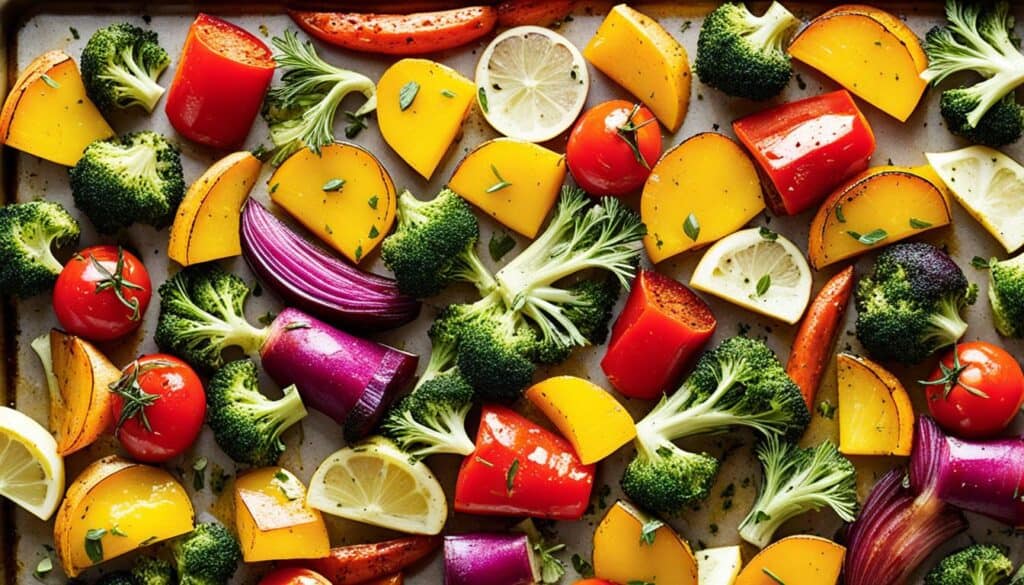
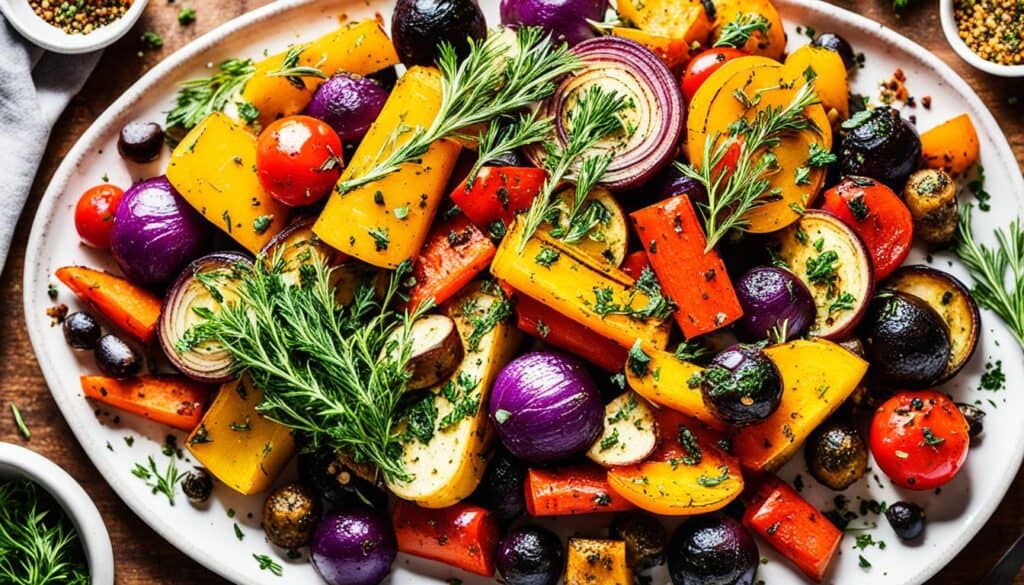

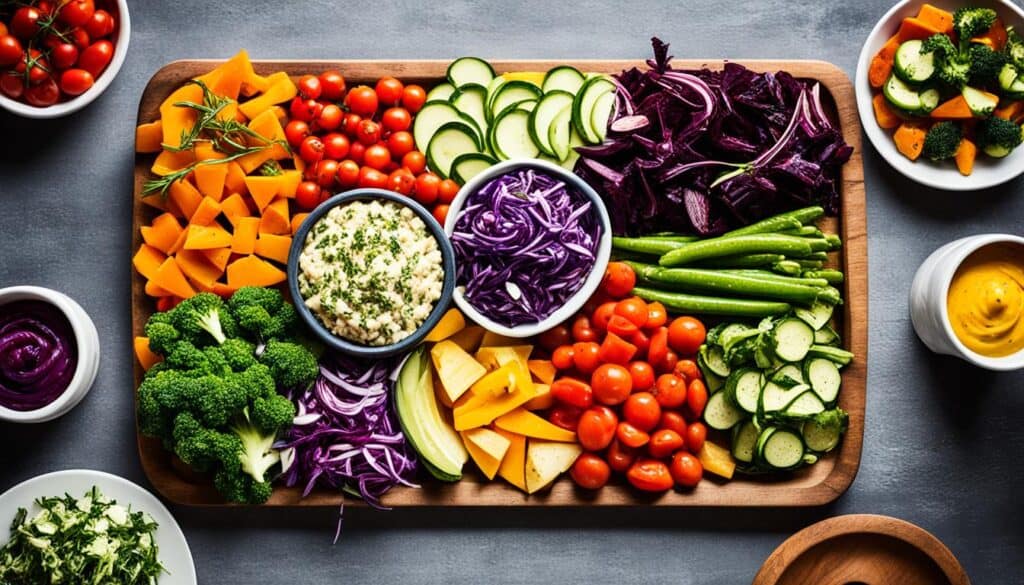



Leave a Reply